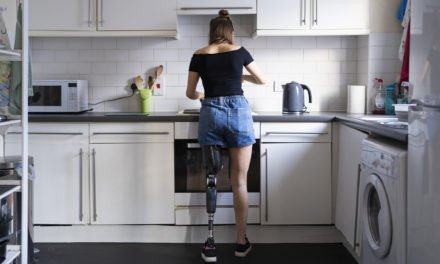
As an inclusion consultant at a federal agency, I have facilitated 1,467 learning conversations to 53,561 employees and 8,005 managers for a total of 61,566 clients touched by the inclusion narrative at their organization. Of these dialogues, 107 were focused on generational inclusion as they struggle with the perfect storm of five generations in the workplace for the first time in its history. The reality is, virtually everyone who is gainfully employed navigates difference across four other generations. Which begs the question, is the workplace of 2022 ready to build work environments where generational differences are recognized and embraced?
Everyone who is employed navigates difference across four generations. Is the workplace of 2022 ready to build work environments where generational differences are recognized and embraced? Click To TweetI understand that generational issues are not at the top of everyone’s inclusion shopping list as we struggle with more visible matters like race, ethnicity, culture, disability, gender, gender expression, and identity. Ironically, generational inclusion or the lack thereof, has a profound impact on whether we achieve inclusion, diversity, equity, and justice for all differences, regardless of their label.
I first became aware of the cultural generation gap in 2017 through the Brookings Institution’s demographic expert, William Frey. He defined this chasm as a disconnect between older white people and a younger, increasingly diverse, and globalized nation and world.
The impact of this fissure was evident during the 2016 presidential election as President Donald Trump rode into the White House on the coattails of predominately white voters 45 years and older. His appeal was based on the fears of many electors on the older white side of the cultural generational gap — fears about increasing immigrant populations and other demographic changes that have given rise to the harmful “great replacement” theory. This is the misguided notion promoted by white supremacists that white people are being “replaced” by immigrants, people of color, Muslims, and refugees.
In the U.S., foundations of the generation gap house and its off ramp to the great replacement theory and toxic masculinity have been building for years. According to the U.S. Census Bureau, Brookings Institution, and Pew Research Center, these movements may be hard to stop due to the following trends:
- In July 2019, Hawaii, New Mexico, California, Texas, Maryland, and the District of Columbia became majority-minority states. (U.S. Census Bureau)
- By 2030, Georgia, Florida, Arizona, New Jersey, New York, Mississippi, and Louisiana will be added to the majority-minority hall of fame. (U.S. Census Bureau)
- In 2020, white young people under the age of 20 became the new minority. (Brookings Institution Metropolitan Program Census Bureau Estimate, June 17, 2021)
- Between 2010 and 2020, the overall white population decreased by slightly over 5% for the first time in our nation’s history. (Pew Research Center findings from census data 2000-2020)
- By 2030, white Millennials and Gen Zers will be the minority in the category of people under the age of 50, while white Pre-Boomers and Baby Boomers will dominate nearly 75% of all people 65 and older. (Brookings Institution Metropolitan Program Census Estimates)
- By 2065, the USA foreign-born population is projected to hit 65 million. (Pew Research Center projections for 2015-2065)
- Since the late 1990s, women have outpaced men in college education when it comes to receiving bachelor’s degrees. (Pew Research Center analysis of Current Population Survey Annual Social and Economic Supplement 1970-2021)
Pew Research Center and Gartner, Inc., have shown that agreement with the following ideas corresponds precisely with the U.S. cultural generation gap; younger generations support a more inclusive, environmentally safer, pro-choice, and open world at higher numbers than their older generational cohorts.
Younger generations support a more inclusive, environmentally safer, pro-choice, and open world at higher numbers than their older generational cohorts. Click To Tweet- White people declining in population is a good thing. (Pew Research Center survey of USA adults conducted July 8-18, 2021)
- It is harder to be a Black person than a white person. (Pew Research Center survey of USA adults conducted July 27-August 2, 2020)
- Support for the Black Lives Matter movement is necessary. (Pew Research Center survey of USA adults and teenagers conducted March 21-27, 2022)
- The impact of injustice and protests make it difficult to concentrate at work. (Gartner June 2020 USA Election Sentiment Survey)
- Government should do more to solve problems. (Pew Research Center survey of USA adults conducted April 25-May 1, 2022)
- Immigrants strengthen our county due to their hard work and talents. (Pew Research Center survey of USA adults conducted January 9-14, 2019)
- More should be done about climate change. (Pew Research Center survey of USA adults April 20-29, 2021)
- The USA is less respected around the world. (Pew Research Center survey of USA adults conducted March 16-22, 2022)
- Unmarried couples living together is a good thing. (Pew Research Center survey of USA adults conducted October 18-24, 2022)
- I use the Internet every day, own a smart phone, and utilize social media. (Pew Research Center survey of USA adults conducted January 25-February 8, 2021)
- There is not much difference between Democrats and Republicans. (Pew Research Center survey of USA adults conducted on July 8-18, 2021)
- Friends, communities, and relationships give more meaning to life. (Pew Research Center Spring 2021 Global Attitudes Survey)
- Having people of different backgrounds, ethnic groups, races, make the world a better place to live. (Pew Research Center Spring 2021 Global Attitudes Survey)
- Discrimination against people of color is a serious problem. (Pew Research Center Spring 2021 Global Attitudes Survey)
- Overturning Roe v. Wade was wrong and abortion should be legal in all cases. (Pew Research Center survey of USA adults conducted June 27-July 4, 2022)
The cultural generation gap brings us face to face with age-old tensions between people older and younger; and those who are perceived as being white and those with darker skin. History has proven that one window to full inclusion, regardless of one’s age or generational identification, is to welcome the perspectives and embrace the inclusion that each new generation brings to the table.
Will we ever understand that if it takes a village to raise a child, it takes a society to raise a generation? Are we willing to acknowledge that every generation is the “Me Generation”? Do we understand that by the time we are out of high school our generational values are starting to shape who we are? Do we grasp the fact that when we reach our mid 30s, our generational principles are baked in? Are we able to learn something about each generation to improve our literacy of how they impact, will impact, and have impacted the world?
Do we grasp that by mid 30s, our generational principles are baked in? Are we able to learn about each generation to improve our literacy of how they impact, will impact, and have impacted the world? Click To TweetWill the widening of this generational breach divide us even more, or will we finally wake up to the potential that generational and cultural inclusion can offer? Whatever the future holds, there is one thing for certain: Our country is changing too fast for some older white people. I guess the more things change, the more things stay the same.
* Nothing in this blog post is a reflection of the positions of the federal government. The opinions in this piece are solely the views of the writer in his personal capacity as an American Indian.


















